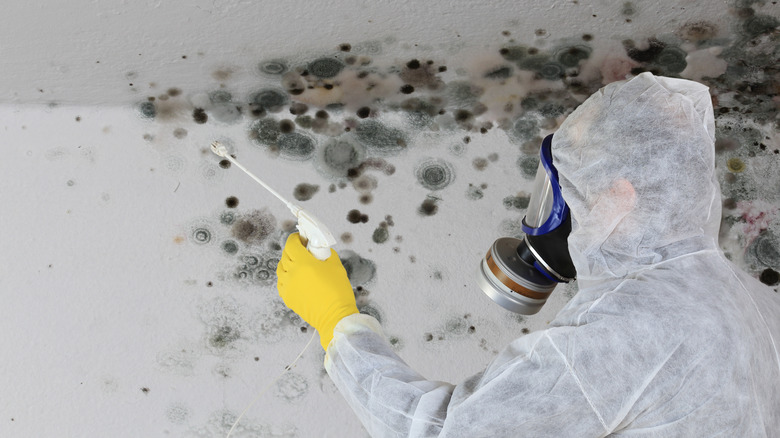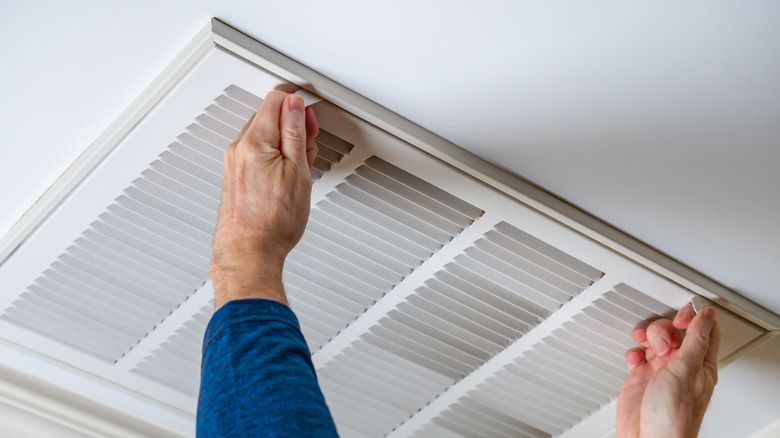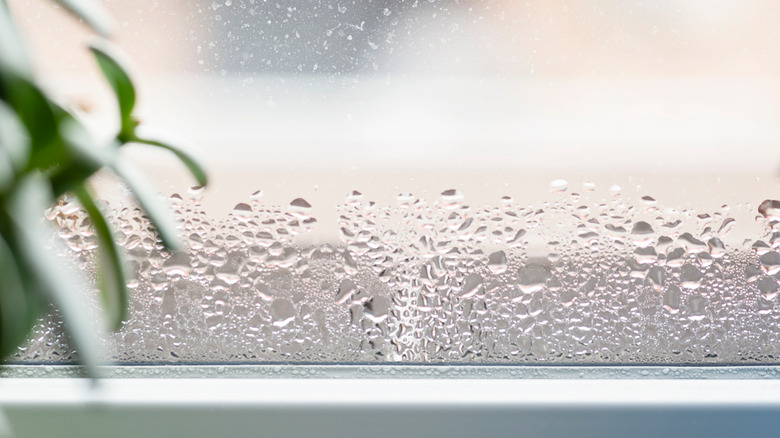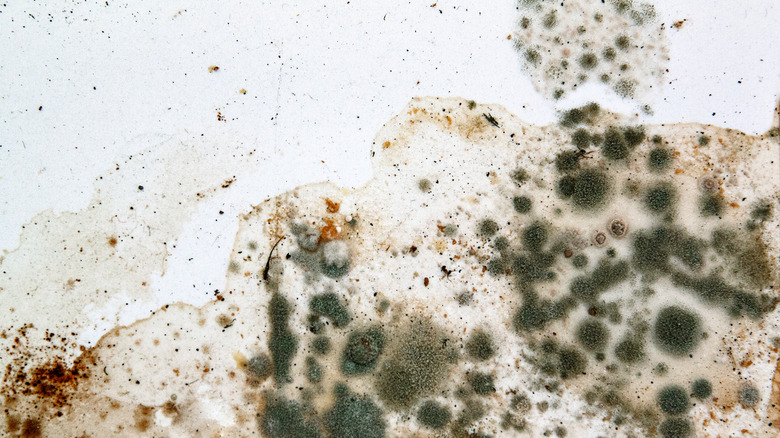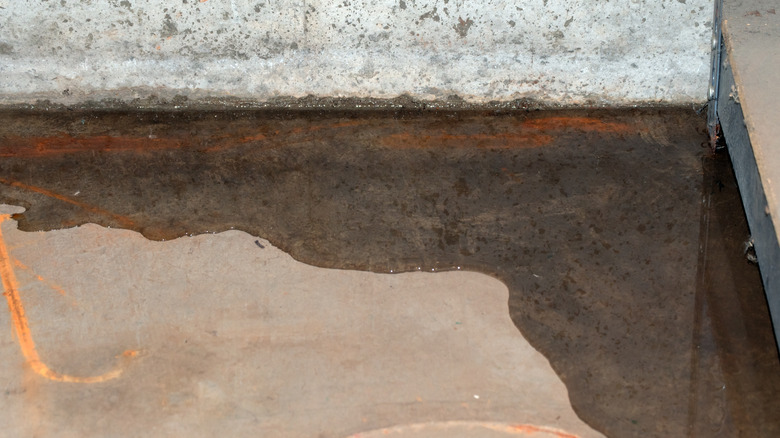5 Signs Your Basement Is Full Of Hidden Mold
You probably know what's happening when dark-colored spots start to appear in certain parts of the house. Bathrooms, kitchens, and basements are common areas to find mold, which is a fungus that grows and spreads into spores. This is because mold thrives in excess moisture and damp environments. While mold is natural, it can be serious when it appears inside the home because it can affect health. If someone in the home has mold allergies or is immunocompromised, being exposed can cause reactions and illnesses (via WebMD).
Basement mold is a common problem because the basement is an enclosed space with poor ventilation, which makes it very conducive for mold to grow. Leaking pipes, flooding, and other forms of serious water damage are some of the causes of mold in the basement. Here are some of the signs that there is mold in your basement so you can quickly begin the cleaning process!
1. A strong odor
You need to pay attention to a change in the smell of the area. JSE Labs says to look out for a "strong, earthy, dirty, and musty smell." The mold might not be visible at first, which is why one of the main signs is the odor. The odor comes from its growth process, so as it spreads, it produces gases that cause the smell. Because mold thrives in areas with poor airflow, the strong smell will be trapped in the basement and quite easy to sniff out.
Try to track the odor to the spot where it seems to be the strongest, which will determine your next steps. For example, mold is often inside the walls, an area that will need professional assistance (via Top Ten Reviews). Vents, air conditioners, and heaters can also grow mold and emit bad odors since their insides are damp and not exposed to air.
2. Condensation
Are you noticing a lot of condensation on surfaces like windows, pipes, etc.? When your house is so warm that the air can hold a lot of moisture, condensation happens as that air meets cool surfaces, explains Basingstoke and Deane. Because of this, it is possible that mold is present since it needs that dampness to survive. Some things you can do to combat condensation and excess moisture in your basement include using dehumidifiers and air conditioners, maintaining proper ventilation, and keeping the temperature appropriately warm or cool (via WebMD).
Generally, the humidity in your basement should be between 30% and 50% (via American Family Insurance), so aim for that when setting up your appliances. One tip from Basingstoke and Deane that can be applied in the basement is to keep structures like furniture pieces away from the wall and empty on top so as to encourage a bit more airflow. Basements often store a lot, and all those nooks and crannies are breeding grounds for mold.
3. Allergic reactions
When there are mold spores present, whoever is in the vicinity breathes them in, and those that have mold allergies or other respiratory issues are especially sensitive to this exposure. Those with weaker immune systems like children, elderly people, and people with serious illnesses are also more sensitive. If you notice coughing or sneezing fits that weren't common before, especially when in the basement, such reactions are a sign that mold is present. For those with asthma, in addition to allergies, attacks can be a product of exposure to mold.
Other reactions include "runny or stuffy nose; postnasal drip; itchy eyes, nose, and throat; watery eyes; dry, scaly skin; wheezing; shortness of breath; chest tightness," lists Mayo Clinic. In more serious situations, mold can get into the lungs and cause worse symptoms. While allergy medications can relieve symptoms, the best way to get rid of them is to attack the mold and avoid the basement in the meantime.
4. Mysterious spots
This is probably the most common sign of mold. If you notice the presence of new or additional spots in a certain area, you need to check it out. Mold spots appear in various forms and textures. They can be black, brown, gray, green, or white. They can feel fuzzy, slimy, or simply create large patches of discoloration. Mold can also present as peeling wallpaper or darkening bathroom tiles.
In some instances, however, it can be hard to identify if you're seeing mold or something else. If you have wood in your basement, for example, you might be wondering: am I actually dealing with mold or just stains? Knowing how to identify mold can save you resources because some other issues are merely aesthetic and cause no harm. One tip from Conner Industries when it comes to wood is to look out for damage in addition to a change in color.
5. Severe water damage
Did you know that a whopping 98% of all basements in the U.S. will go through some sort of water damage (via SFWeekly)? This serious issue is caused by various factors, including poor or leaky drainage systems, openings in floors or walls, and rain. Basements are most susceptible to this since they are at the bottom of the house structure and usually underground — just like sewage systems.
People usually try to clean up after flooding by emptying and airing out the basement and mopping up water. However, mold usually comes into the picture when large amounts of water go unnoticed or when they are left to sit out for too long. This is why any prior experience of water damage can be a sign of hidden mold. In order to get ahead of any mold that could be quickly forming due to the unseen water, a professional inspection is required to ensure there isn't any water left in the area, per SFGATE.
